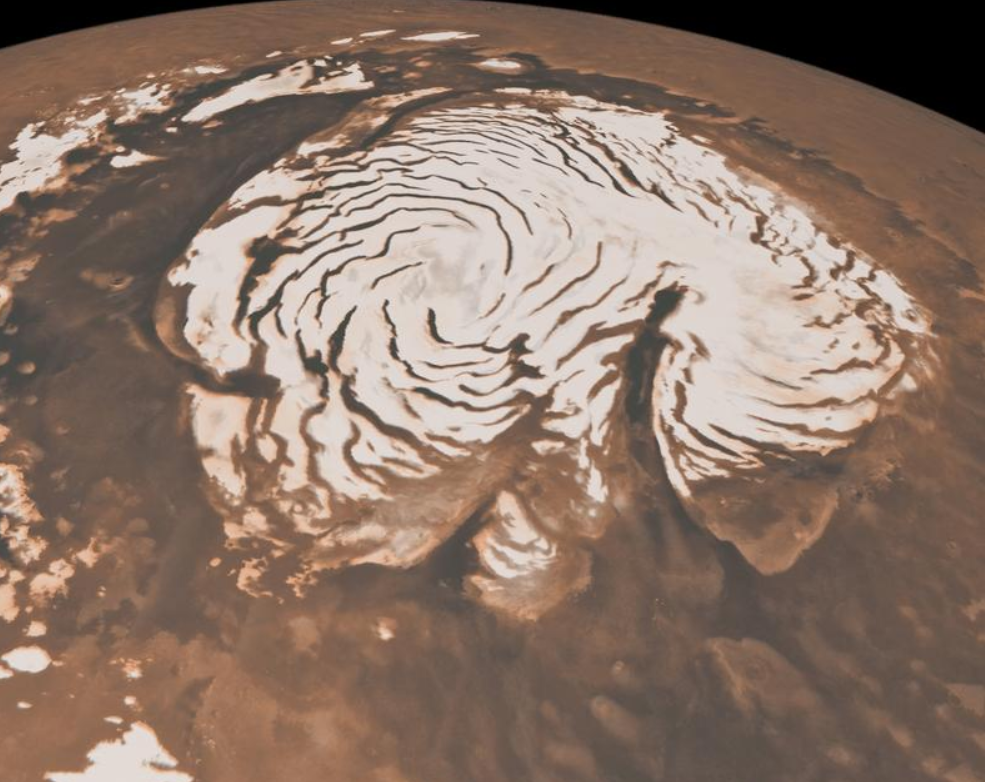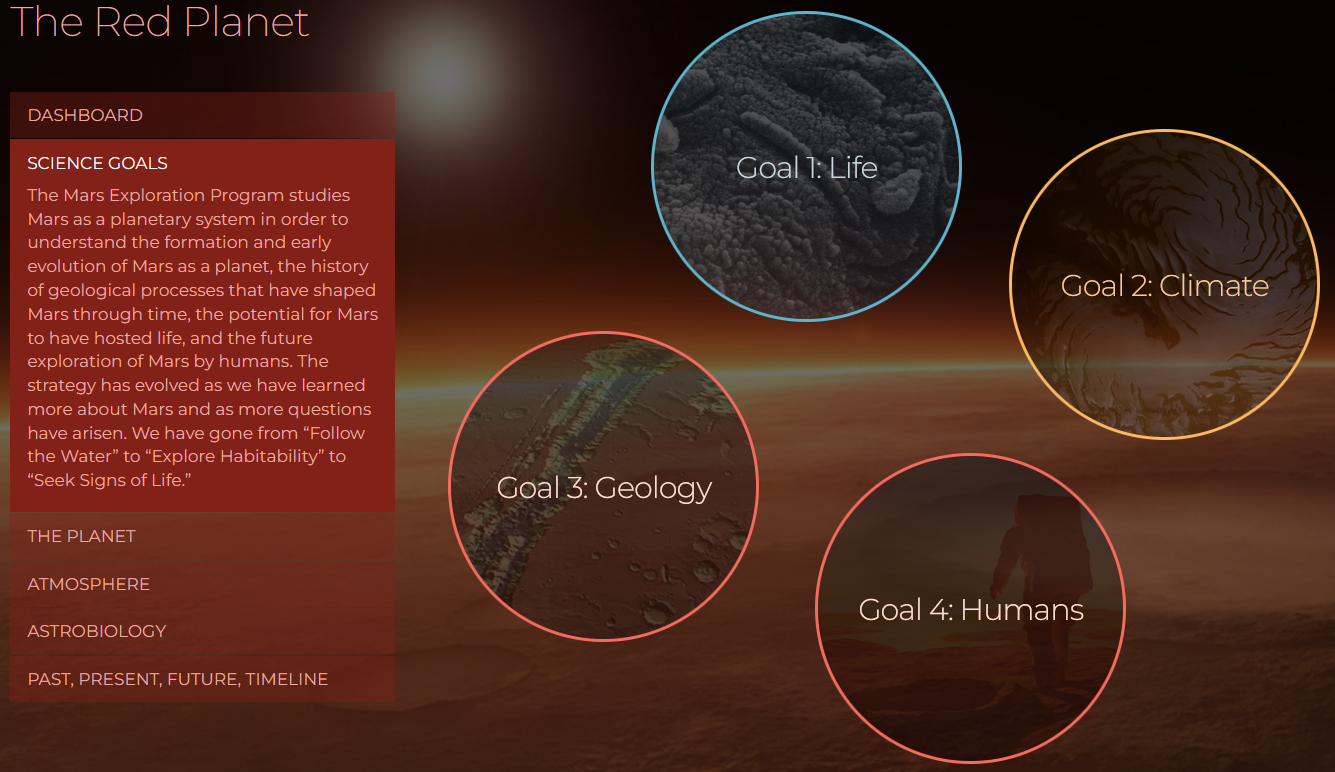Mars: Our Cool, Rusty Neighbor
Written by Barros | January 8th, 2023 | Science
From the beginning of mankind, humans have stared up into space. Maybe that’s because it’s so vast and so easily noticeable, taking up the entire night and flooding into the day; maybe it’s because humans have an instinctual calling to look up, as we share 99% of our makeup with stars (“We are made of star stuff,” by Carl Sagan). Stars are not the only attraction to be found in the night sky—our neighboring planets and even the moon also captivate our collective attention. Mars in particular, though only one of the many planets in our solar system, has been interesting for a very long time. In 1534 BCE, it was first sighted by Egyptians; in 1610, Galileo Galilei observed the Red Planet with a telescope for the first time. Probably before then, and definitely after, humans have been fascinated by our planetary neighbor, particularly in matters of life—the potential life it may have sustained in the past, and whether or not we may be able to live there one day in the future. In the following paragraphs, I’ll take you on a brief tour of just how fascinating Mars is, and explain a few of its interesting and awe-inspiring traits.
The Habitable Zone
The Earth is in what astronomers call the “Habitable Zone”—an area just far enough from the Sun to keep us from burning to a crisp, but still close enough to keep the water on Earth’s surface from freezing. Mars, being our next door neighbor, is just outside of this Habitable Zone. Fascinatingly and terrifyingly enough though, the Habitable Zone is moving outward at a rate of 1 meter each year due to the slow expansion and heating of the Sun, meaning that the Earth will leave the Habitable Zone within the next 1.75 billion years, after which Mars will then be comfortably within it. Due to this moving of the Habitable Zone, it is very possible that in a few billion years, if not sooner with the help of very advanced technology, Mars could potentially be populated by humans, if not bacteria it happens to host on its own.

Mars’s northern ice cap

The Perseverance Mars rover
Life on Mars
Speaking of life on Mars, radio studies from the MARSIS (Mars Advanced Radar for Subsurface and Ionosphere Sounding) on the Mars Express spacecraft from 2012 through 2015 have found evidence of a liquid lake beneath the Planum Australe region’s ice cap, meaning that Mars must be geothermally active. These discoveries are consequential for two main reasons:
- Liquid water, as most people know, is the most important element for life as we know it to form and survive, so finding it is very promising.
- Geothermal activity means that the planet itself can generate heat.
What does life like a lot? Heat and water! Discovering these key elements on the planet means that, even without the assistance of humans, potential life could exist on it. The geothermal energy could also be potentially harvested by future human settlements to power things like machines and to generate and store heat!
Plenty of books have been written about life on Mars, as well as the terraforming of Mars by humans, such as the Spin trilogy by Robert Charles Wilson (which I recommend!). While this may all seem like far-fetched fiction, the possibility of at least bringing humans to Mars seems to be becoming more and more likely by the year. Rovers like Curiosity, Perseverance and InSight (which sent its last signal on the 15th of December, just before its solar panels were completely covered by dust) are only three of the five robotic vehicles that have been sent up to Mars by NASA, and go to show that is it one-hundred percent possible to get there and collect information about the planet. Before we can actually send humans there, however, more work needs to be done. NASA’s current plan for Mars consists of four steps:
- Determine if there was ever life on Mars.
- Understand the climate and weather history of Mars.
- Examine the geology of Mars and its history to figure out why it is the way it is.
- Prepare for human exploration.

NASA’s plan for Mars has 4 goals.
As of now, NASA has not been able to determine whether or not life has existed on the Red Planet, though past and current liquid water has been confirmed. On December 21, 2022, Perseverance took a few samples of Martian rocks, dust, and atmosphere, which are to be collected by a future robot, blasted into the atmosphere, and taken to Earth. This is all to say that while step one hasn’t really been fulfilled, steps 2 and 3 are well underway. Once this research is complete, NASA—as well as SpaceX—plan to send humans to Mars for around 30 days to do in-person research and collect even more samples. The estimated year for this is undetermined, but the late 2030s or early 2040s have been discussed.
Conclusion
Mars, named after the Roman god of war due to its blood-red color, is the nearest potentially life-bearing planet, at just 57 million miles away. It has many fascinating secrets we have just barely scratched the surface of, and many more we have yet to discover. From liquid water to its future Habitable Zone status, I don’t think anyone will be losing interest in our little rusty-red friend any time soon.
Sources
Information and Helpful Links
- Human Makeup and Stars: https://www.nhm.ac.uk/discover/are-we-really-made-of-stardust.html
- Space(dot)com on Mars: https://www.space.com/47-mars-the-red-planet-fourth-planet-from-the-sun.html
- Mars and the First Observations from Earth (page 22): https://articles.adsabs.harvard.edu//full/2008POBeo..85…19N/0000022.000.html
- Habitable Zone Expansion: https://www.nature.com/articles/nature.2013.13788
- TIME Lake on Mars Article: https://time.com/6218231/lake-on-mars/
- Water on Mars overview: https://www.science.org/doi/10.1126/science.aar7268
- NASA Rovers: https://spaceplace.nasa.gov/mars-rovers/en/
- InSight Retirement: https://www.jpl.nasa.gov/news/nasa-retires-insight-mars-lander-mission-after-years-of-science
- Perseverance Samples: https://mars.nasa.gov/news/9323/nasas-perseverance-rover-deposits-first-sample-on-mars-surface/
- NASA Mars Plan: https://mars.nasa.gov/#red_planet/1
- Humans on Mars: https://www.space.com/nasa-plans-astronauts-mars-mission-30-days
- NASA Journey to Mars: https://www.nasa.gov/content/nasas-journey-to-mars
- NASA Mars in Depth: https://solarsystem.nasa.gov/planets/mars/in-depth/
- NatGeo Geothermal Energy: https://education.nationalgeographic.org/resource/geothermal-energy
- NHSJS on Mars’ Geothermal Energy: https://nhsjs.com/2021/harvesting-geothermal-energy-on-mars-for-future-settlement/
Images
- NASA’s Mars exploration goals: https://mars.nasa.gov/#red_planet/1
- Mars’s northern ice cap: https://mars.nasa.gov/news/1001/nasa-orbiter-penetrates-mysteries-of-martian-ice-cap/
- The Perseverance Mars rover: https://mars.nasa.gov/mars2020/multimedia/images/?t=347&&start=1
New to Pearson Online Academy? Learn More Here.
